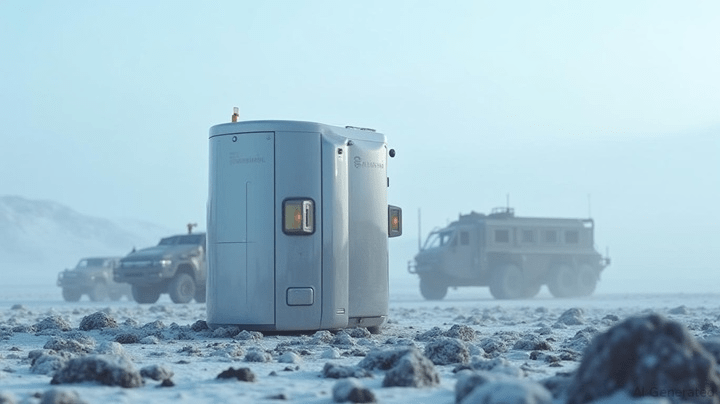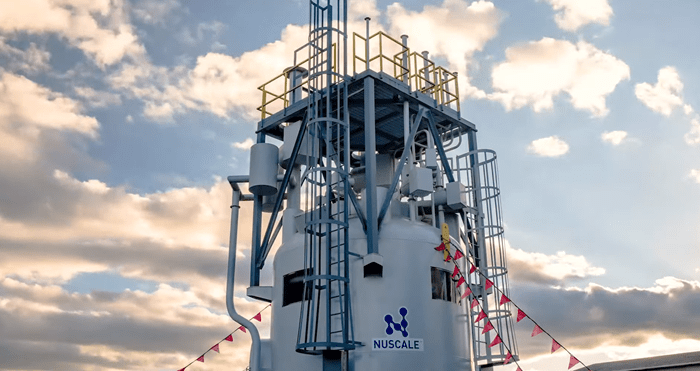
Oklo News Today: DoD Contract Suggests SMR Nuclear Tipping Point
Clean technology firm Oklo has reached a milestone. The U.S. Department of Defense (DoD) announced that it will award a contract to Oklo. Which is to develop, build, own, and operate a microreactor at the Eielson Air Force Base in Alaska. It shows how determined the military is to pursue small modular reactors. It’s for secure and off-grid power in remote areas.
What is the DoD Deal?
Oklo will receive a 30-year fixed-price contract with the DoD. They will supply a 5 megawatt (MW) microreactor system. It will generate electricity and heat for Eielson Air Force Base. It is an energy solution of long duration, which will keep military operations running even in the event of the primary grid going offline.
The project is still in the planning phase and must be licensed by the U.S. Nuclear Regulatory Commission. That would most likely take a couple of years or so, then construction could commence sometime in 2027.
Why It’s a Big Deal for SMRs

Reliable Power in Remote Areas
Eielson Air Force Base is located in Alaska. Which is famous for adverse weather and long winters. Coordination of fuel supplies might be difficult. And costly, as well, and even tardy. If there could be a miniaturized nuclear reactor that would run for years without needing refueling. Then all the issues would be resolved.
Energy Security for Defense
The military needs power that is secure, reliable, and less vulnerable to external attack. Microreactors like Oklo will be independent of the grid power and less vulnerable to attack or system loss.
Cleaner, Faster Nuclear Power
The small modular reactors are simpler and quicker to build. Unlike the conventional nuclear power plants, which are the opposite. They are safer and they produce less waste. This makes them a cleaner and newer method of delivering the energy that will be needed in the years to come.
What Is Oklo Building?
Oklo’s microreactor design is termed the Aurora. It’s compact and far smaller than a standard nuclear reactor. It will last about 10 years before it needs to be refueled. It will generate 5 MW of power and can also provide heat for other uses on the base.
Compared to gigantic nuclear power plants, Oklo’s technology is compact enough to send to a site and install in a few weeks. It is also safe and requires minimal maintenance, making it suitable for the forward-deployed military bases.
A Step Towards Decentralization of Energy
The traditional energy system relies on huge centralized plants and large distribution networks. But what Oklo’s contract with the DoD indicates is a way towards decentralized power. Microreactors like Aurora facilitate the generation of electricity at the point of use itself. For strategic infrastructure, and especially for military bases, this means more autonomy and fewer points of vulnerability in the power supply chain. In an era where cyber attacks and kinetic military strikes on infrastructure are increasing, such decentralization is no longer an option, but a requirement.
National Security and Energy Convergence
National defense and energy policy have run on parallel tracks for centuries. This contract proves they are at last converging. Energy security is national security. That the military is following through on its threat to pursue small modular reactors like Oklo’s is evidence that defense officials have determined clean, localized energy to be an asset. Not only will the Air Force Base stay in operation during grid outages, but it will do so without fuel logistics woes of diesel generators or natural gas dependence.
The Role of Public-Private Collaboration
Oklo’s partnership with the Department of Defense is the best that can be done in cutting-edge energy through public-private partnership. Private industry brings innovation, agility, and investor capital on one side. The public sector provides regulatory frameworks, long-term capital, and deployment opportunities on the other. It is this that propels the deployment of future technologies at an accelerated pace. The DoD’s willingness to invest in a first-of-its-kind project of this type will send a strong message to other federal agencies and commercial industries.
Environmental Impact Considerations
Unlike traditional fossil-fired backup systems, Oklo’s microreactor emits no greenhouse gases when in use. This is a huge win for defense policy and the environment. The Aurora reactor uses HALEU fuel, which is more efficient and generates less nuclear waste. With growing concern over climate change, low-carbon, high-efficiency energy systems yes, even defense are becoming inevitable with speed.
Licensing as the Real Test
All the hype aside, Oklo has to get past one of the highest bars: approval by the U.S. Nuclear Regulatory Commission. NRC licensing is notoriously glacial and deliberative due to the overriding requirement of nuclear safety. Oklo’s initial encounter with the NRC was disappointing when their initial license application was rejected in 2022. But they’ve already submitted revised plans and are in ongoing discussions with regulators. Success here would establish a precedent for future fast-tracked SMR approvals.
Alaska as the Perfect Test Bed
Alaska’s rugged climate, thin energy grid, and remote bases make it the perfect testing ground for microreactor technology. If Aurora at Oklo can succeed there at Eielson AFB, it will demonstrate that this technology is dependable in some of the most inhospitable places on earth. That endorsement will be worth something not just for defense applications, but also for the civilian market in the Arctic, rural Canada, and off-the-grid areas worldwide.
Fuel Supply Chain Development
One of the obstacles for Oklo and the overall SMR industry is the supply of HALEU fuel. There is presently limited HALEU production, mostly in Russia. In order to commercialize the technology, the U.S. needs to ramp up its own domestic enrichment capacity for fuel. Fortunately, the Department of Energy is already investing money into HALEU production. Oklo’s contract gives a motivation for an even faster pace of that process and establishing a secure, sovereign nuclear fuel supply chain.
Microreactors in Disaster Relief
Perhaps the most impactful civilian use of microreactors is disaster relief. In the wake of natural disasters power is difficult to bring to the affected region. Imagine having the ability to transport a truck-sized nuclear battery. That will give a field hospital or communications center for several months. Oklo’s successful test with the DoD could result in coordination with FEMA, USAID, and international humanitarian efforts.
Cost Factors and ROI
Daily, critics also lament that nuclear power is too expensive. It’s also true that up-front capital costs are considerable, but microreactors pay for themselves in the long term by conserving on fuel transportation, reducing maintenance, and operating independently for ten or more years. To the DoD alone, expending billions of dollars each year on energy logistics, even a small percentage of it substituted with microreactors can translate to enormous cost savings. Oklo’s deal offers a long-term case study to watch these savings unfold in real time.
Reviving Nuclear’s Public Image
One of the most underrated benefits of Oklo’s deal is how it starts to change the public discourse about nuclear power. For decades, nuclear power has been framed in the context of risk. Like accidents, waste, and weapons. Oklo, by its new design, clean energy potential, and homeland security value, turns the page. Now nuclear energy can be safe, sustainable, and vital to advancing human prosperity. If this reactor demonstrates success and safety, it may be just what is needed to catalyze a cultural and political transformation on the path to universal nuclear acceptance across the U.S.
What’s Next?
Oklo needs the approval of the Nuclear Regulatory Commission. In order to begin building the reactor. It includes safety reviews, environmental inspections, and design approval. Assuming everything goes according to plan, the construction can begin in a couple of years.
Once the reactor is built and in operation, Oklo will operate it for 30 years. Which is in accordance with the DoD contract. It’s a far cry from the method energy has traditionally been provided to military bases.
Why People Are Watching This Deal

Investors Are Taking Notice
This was the most welcome news in clean energy circles. All believe that it is excellent evidence of support for new nuclear technology. Other specialists believe that the same agreements might follow with other bases or companies.
A New Direction for Energy
The military connection to Oklo is a turning point. It shows that small, advanced nuclear power isn’t on the drawing board it’s becoming a viable answer to tough energy challenges.
More Than Just the Military
If this project is a success, this kind of miniaturized reactor could be used in other remote locations. Like disaster sites, research stations, or even space missions someday. The possibilities are endless.
Oklo’s new contract with the Department of Defense is a giant step forward in the nuclear industry. It shows the growing need for clean, safe, and reliable energy. Which can power even under the most extreme conditions. Thanks to microreactors like Aurora, the future of energy can be smaller but smarter.
This project proves that national security and innovation are not mutually exclusive. It also serves as a standard of how we are thinking about nuclear energy not as a last resort military weapon, but as a choice to power the future.




